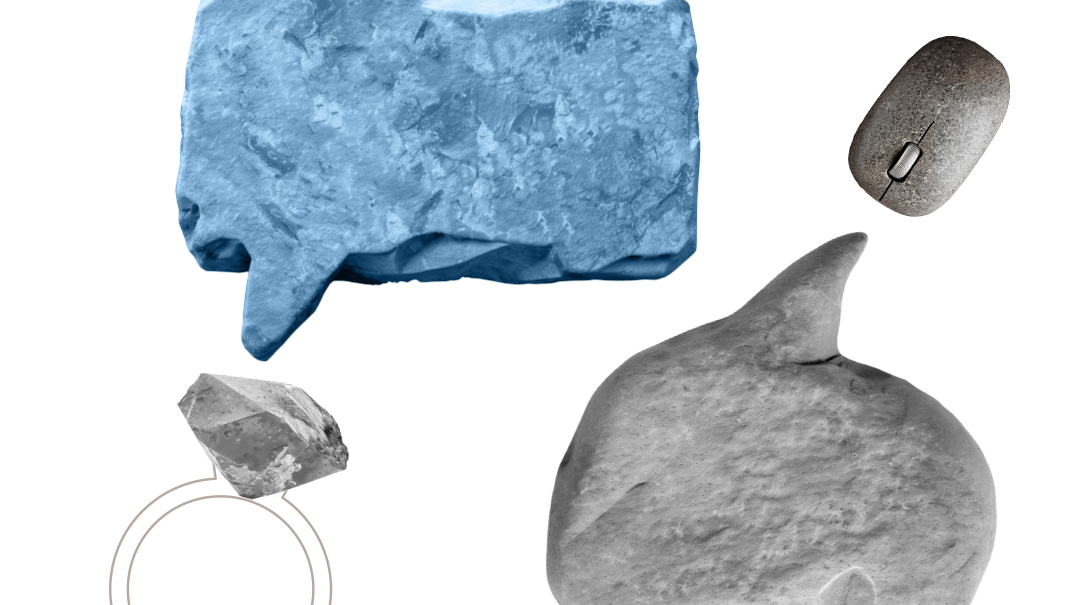Emerging from the Whirlpool
| May 3, 2022My hyperemesis gravidarum was unbearable. Then I found a path through the darkness

O
nce upon a time, there was a disease of pregnancy so horrendous no description could fully convey the misery of it.
Once upon a time, there was a woman who, in the throes of this disease, told her husband in desperation, “I don’t know how I can endure another pregnancy like this.”
Once upon a time, there was a woman desperate to have another child, but who couldn’t fathom going through pregnancy another time.
Disease and Desperation
If you haven’t experienced it yourself, there’s no way you’d ever be able to imagine the depths of misery that women experiencing hyperemesis gravidarum (HG) — severe nausea and vomiting during pregnancy — endure. I can try to explain, to paint a picture, but there aren’t really words to adequately describe six to nine months of mind-blowing nausea, endless vomiting, extreme weight loss, starvation, muscle wasting, and severe dehydration.
Imagine your worst experience with nausea (food poisoning, stomach virus, typical first-trimester nausea), multiply it by about 500, and then imagine it continuing relentlessly minute after minute, hour after hour, day after day, week after week, month after month.
And even if you did that, even if you could somehow envision that, you still wouldn’t know what it’s like. You wouldn’t understand the desperation, the suffering, the extreme aversions to food and to people, the sickening smells that overpower you from every direction — the drain in the shower, the walls, the detergent and the cleaning solutions, the food your family members ate hours ago that somehow emanates from their very pores, the food your neighbor is cooking.
Would you be able to fathom believing you’re actually dying, minute after minute, to imagine feeling that you’re shrinking and shrinking further and further until you’re not sure there’ll be anything left of you at all, let alone a child growing inside?
My husband said that seeing me slowly starve was chilling. Try as I might, I just couldn’t eat. If I did somehow get it down, it came back up soon after. I was desperate for nourishment, but unable to consume it, and experienced the severe weakness that accompanies clinical starvation.
After my first pregnancy, I was able to be convinced that “first pregnancies are hard.” I believed everyone that maybe it had just been a bizarre fluke, or that maybe I’d been a little dramatic. Then baby number two was on the way. When HG hit again, full force, I vowed: Never again will I suffer like this. I’m going to find a way out of the clutches of this monster. Because I want to have a family.
Self-developed Treatment Protocol
After baby number two was born, my desperation to have additional children sans HG spurred me to spend what ended up being hundreds of hours of researching my options.
I combed through medical journals and studies. I spoke to countless women across the globe for every crumb of information I could glean. I reached out to nurses, pharmacists, and doctors from the US, Israel, and beyond. It became my second job; every night, after my kids were in bed, I’d hit the computer.
Slowly, over the course of two years, I developed my own treatment protocol. It took shape over weeks and months, one medication at a time, as I researched effectiveness, fetal safety, and side effects. Then I started working on my pre-pregnancy protocol. How could I best prepare my body for the nightmare that was coming? Which supplements might possibly strengthen my system? Maybe I could prevent the ferocity of HG? I was committed to doing everything in my power to try.
When I saw expectant women walking around, or in the supermarket, I found myself blinking back tears. I wanted it so badly it hurt. To be pregnant — and in the supermarket? It felt like they’d won the jackpot, and I’d somehow missed out.
In addition to the exhaustive medical research and my emerging protocols, my husband and I embarked on intensive ruchniyus preparations. We strengthened our emunah and bitachon; we studied the subjects in depth. We accepted kabbalos. We davened, cried, begged, and pleaded.
Even before I’d tried my protocol myself, I felt it was worth sharing. I couldn’t make any promises, but I felt it had a good chance of helping women have an easier pregnancy. My very first HG event took place (in Hebrew) in my home, and 16 women came from three different cities. Each of them had experienced HG in the past.
I shared my protocol. They shared their stories. I watched as they realized that yes, someone else really understands! Most of these women had never met a soul who could truly appreciate what they’d gone through.
Mere days after the event, HG hit. We’d been blessed with another pregnancy — and despite my preparations, the disease returned. The first day I felt like I was drowning. It seemed like my world was slipping away. But one of my last conscious thoughts that afternoon was a feeble whisper in my mind… no, wait, I have a protocol.
I can’t tell you it was easy. I can’t say I didn’t have HG. But I can tell you that it was a different ballpark. For most of my pregnancy, I was able to function on a basic level. Could I cook and shop and serve my family food? No. I couldn’t eat very much either, and I suffered plenty. But it was still a different world in every sense. By mid-pregnancy, I was actually doing laundry! On my own! It was a miracle for which we were so grateful.
A Ray of Hope for Others
Having experienced such dramatic improvement, I felt an increased obligation to share my protocol with other women. How could I keep this information to myself? Somehow, my number got around, and more and more women were turning to me for advice and guidance.
Another proof of how well I was doing is that before the baby was born, I organized an additional HG event. This time, I rented a local kindergarten, and 60 women who’d had HG came. Women poured in from all over the country. There was a carload of women from Rechovot, women from Beit Shemesh, some from towns in the north and others from cities down in the south, from Be’er Sheva to Afula to Carmiel, from Bnei Brak to Jerusalem to Achisamach to Beit Chilkiya, from Kiryat Gat to Netanyah to Ofakim. We gathered together in the gan and within minutes, the comments flew thick and fast.
“After six weeks in the hospital they let me home with daily IV fluids and IV Zofran…”
“My doctor told me it was because I didn’t want the baby…”
“What baby? You could think about a baby?”
“Watermelon ice-pops, for about three weeks, it was the only thing I could ingest. Sometimes they’d stay down…”
“I’d been in the hospital for over a month and had lost 21 percent of my body weight, and my cousin asked if I’d tried crackers and ginger…”
“My kids went through intensive therapy after I finally had the baby; they were really affected by the trauma of losing their mother for nine full months…”
“My sister-in-law told me she also gets nauseous when she’s expecting, and I should stop making it out to be so bad…”
“Pregnancy isn’t a disease…”
Standing there, overhearing the conversations, I caught that last line and I heard myself saying, out loud, “That’s correct! That’s 100 percent correct! Pregnancy isn’t a disease.”
I had the women’s attention. Everyone turned to look at me and the room quieted as I continued. “Pregnancy is a normal, natural, wonderful thing. But hyperemesis gravidarum is a disease. A disease that affects not only your physical well-being and your ability to function, to take care of yourself and your family, but also your emotional well-being, your husband, your children, your finances, and your entire home.”
As I spoke, I moved up to the front of the room. “That’s why we’re here tonight. Over the last few years, with Hashem’s help, I’ve been intensively working on researching and developing a treatment protocol. Several women have used my protocol in the last few months, and thank G-d, the results we’re seeing are incredible.
“No, I can’t take away your HG. No, I can’t promise you that you’ll never again suffer. But I feel confident telling you that at least 70 to 80 percent of you will be able to have a somewhat easier pregnancy following this treatment protocol.”
Pre- and Peri-Partum Protocol Presentation
Over the course of the evening, I presented my protocol, which was a three-pronged approach. Step 1, on which I didn’t elaborate, was spiritual prep — gathering zechuyos and tefillos. That, I explained, was personal; there was no guidance I could offer.
Then I moved on to Step 2: The pre-pregnancy protocol. This includes dozens of ways women can strengthen their system pre-pregnancy, medical tests they can take, to diagnose and treat issues which could potentially worsen HG, and, lastly, technical ways to prepare for HG in advance. All of these preparations can make suffering through HG easier.
The last, and most important step, is the actual Treatment Protocol. This is a long and detailed explanation of the medications used to control the symptoms of HG.
It begins at Stage 1, which I suggest that women with a history of HG start the moment they discover a pregnancy, hopefully before the onset of symptoms (ideally at four weeks).
The protocol moves on to Stage 2, which includes medications that generally need to be started by week five to six, but may be taken earlier or later than that, depending on symptom severity.
Stage 3 is to be started the moment that the meds in Stages 1 and 2 aren’t enough: the woman is still vomiting frequently, losing weight, unable to eat, and unable to function due to continual and severe nausea. Stage 4 includes additional interventions, most of which are necessary only in severe cases of HG, where Stages 1, 2, and 3 aren’t enough to keep the mother stable.
The main point is: there is something to do. And if Stage 1 isn’t enough (for HG, it usually isn’t), we move on to Stage 2. The meds in each subsequent stage aren’t replacing the meds in the previous stage. Unless there’s an allergy or unbearable side effects, each stage builds on the next. Stage 1 meds are the base, the foundation: necessary, but generally not enough. Stages 2 and 3 are the ground floor and the second story. Stage 4, when necessary, is like the attic — hopefully bringing more relief.
At this, my second HG event, I explained, I demonstrated, I shared statistics. The air in the room was electrified, and women left cradling new hope in their hearts.
A Sliver of My Heart
By the time I organized my third HG event, when my third baby was about a year old, I’d counseled dozens of women through their pregnancies. My protocol had continued to evolve based on my own experience, additional research, and other women’s experiences.
Before the event, I’d prepared comprehensive information packets. The packets included the pre-pregnancy protocol on preparing for HG medically and practically; the detailed, aggressive medication protocol; and the HER brochure, which I’d translated into Hebrew, and which explained the difference between normal, healthy morning sickness and HG.
There was also a “Letter to the Husband.” Four women who had each experienced HG, along with three of our husbands, had sent draft after draft to each other, tweaked and perfected, until it said what we wanted it to say. There were other helpful booklets in the packet as well.
In each booklet, in each information packet, there was a sliver of my heart, blood, sweat, and tears, the clock having moved ever-steadily past midnight over and over again as I researched, wrote, translated into Hebrew, edited, improved, and wrote some more.
I whispered a prayer as I slipped the booklets into each plastic sheet protector: Hashem, please, allow me to help them. Let us be healthy. Each of the booklets was written with the steely determination to share this information with the world.
I spoke, handed out my information packets, fielded questions, and watched the women enjoy the refreshments as they savored the company of other women who understood their experiences and trauma.
Earlier that day, as I was preparing the gan for the evening’s event, a lady from the community had popped in. I was thrilled to see her, as I’d coached her through her pregnancy, which was then halfway through. Tears came to my eyes as she told me: “I saw my doctor this morning, the one in Hadassah Hospital where I was hospitalized with all my previous pregnancies. He told me, ‘Chani, you’re a medical miracle.’ I responded, ‘No, doctor, I’m finally being properly treated.’”
This is a woman who was on a PICC line in previous pregnancies. After using the protocol, she had a pregnancy that could almost be called normal. It made me think of the neshamos women had tearfully promised me were coming down to this world because of the success they’d had with the treatment protocol.
As the hour grew late and women started heading home, I began cleaning the empty gan. My thoughts turned contemplative. I thought of the endless vomiting, debilitating nausea, the lack of understanding, support and validation. I thought of my precious, precious children waiting for me at home, of the dark, endless months of suffering, and of the dozen medications in my HG box in my closet.
All three of my “HG Events” had been arranged with one goal: To make going through HG a little easier. I felt that Hashem had shown me a path in the darkness, and I felt it was my responsibility to share it. As our rav gently said when I felt like I was at the end of my rope: “You may not stop doing this work.”
Because there is a road through the darkness, and I want to light the way for others in any way I can.
Support Pillar
Have a friend/sister/daughter/neighbor with HG? Here’s how you can support her:
- Believe her, validate her, empathize with her. Don’t tell her she’s being dramatic. Don’t tell her to “stop throwing up,” just like you don’t tell someone with a raging fever to “stop shivering.” She can’t “snap out of it” and she can’t control her symptoms.
- Help in any way you can. Offer to place her grocery order, cook a meal, or watch her children. Offer to take care of errands like toiveling or dry-cleaning. Best case scenario, offer your services before the pregnancy, so she knows she can count on you. Most women with HG would prefer meal chains and the like during pregnancy as opposed to after birth, when many feel significantly better than they have in months.
- Learn as much as you can about HG, and ensure that the woman you care about is being treated with an aggressive treatment protocol.
Where can I find more information about HG?
The materials I wrote up are in Hebrew, as most of the women I’ve guided are Hebrew speaking. The HER Foundation is a wellspring of high-quality English information. Their site is divided into sections for mothers, relatives and friends, and healthcare providers. Click on the appropriate section to learn more about how they can help you. Visit: https://www.hyperemesis.org/
- Preparation is critical. Make sure you have a plan in place. That includes, most importantly, a solid medical plan, as well as a plan for meals, childcare, and housework for the weeks or months you won’t be able to do it yourself. Stress makes HG worse, so taking care of these things ahead of time can be helpful.
- Find a doctor. Knowing which meds can help isn’t helpful if you can’t get those meds. The time to set this up is before you’re expecting. Your ideal doctor is compassionate, experienced in treating women with HG, and open to trying different medications. Keep trying until you find your shaliach tov. (Here would be a good place to remind yourself of the dictum: If at first you don’t succeed, try, try again.)
- Educate your spouse, older children, parents, boss, coworkers, friends, neighbors, and relatives. Share HER’s materials, tell them about HG, and tell them how they can best help you. Explain the difference between the nausea and vomiting of a healthy pregnancy and HG.
- Not all medications need to be taken orally. When it’s impossible to swallow medication, some meds can be administered via suppositories, patches, creams, sub-cutaneous pump, or intravenously.
- Being dehydrated equals meds not working properly. In untreated HG, dehydration is nearly inevitable, but once properly treated, it’s possible to stay ahead. Drinking ice-cold water from a bottle (to reduce freezer smells) or slushy-icy-texture liquid (any liquid is good, if you can’t tolerate water), and/or getting regular IVs at an infusion center or through home-health care can make a huge difference.
- When it comes to HG, the focus should be more on calories than on health. If something appeals, eat it. Don’t worry about it not being the healthiest food; experiencing clinical starvation is worse than eating sugar or white flour. Don’t let someone bully you into avoiding the one food that will stay down, even once. That said, the two universally most “dangerous” HG foods are onion and garlic; avoiding them, even in sauces, chips, and the like, may be prudent to avoid severe symptoms afterwards.
- Don’t try weaning yourself off medications! Having a good day isn’t a reason to stop your meds. An insulin-dependent diabetic can have a healthy blood sugar reading, but she clearly can’t stop taking insulin because of a normal blood sugar result. Respect that HG is a disease. Take your meds carefully and consistently. Sudden weaning can cause severe regression. HER’s recommendation: Attempt weaning only once in the second trimester or afterwards, after two weeks in which you experience NO symptoms (i.e., you feel perfectly healthy), and do it slowly. Drop only one pill every few days, making sure there’s no worsening of symptoms before dropping the next.
- Fatigue and stress can make HG worse (as with most diseases). In addition to ensuring proper rest and arranging help in advance, be aware that when you feel well, you’ll do more, and that can cause a relapse. Take things slowly.
- Control the odors in your environment as much as possible. Ensure that your home is being cleaned regularly, particularly the sinks, garbage cans, and fridge (you’re not the only one who can smell food through the fridge door). Learning to breathe through your mouth, as opposed to your nose, can also help with odors in a place you can’t get out of (taxi on the way to the ER, anyone?). It’s the way you would breathe when you have a cold and your nose is stuffy; you will sound congested when you speak. Lastly, purchasing a houseplant called a dracaena may help control odors in your room.
- Do your research well before allowing anyone (medical personnel included) to convince you it’s better to avoid taking medication when pregnant. Look up the long-term effects of maternal starvation, dehydration, and depression on offspring, and make sure you understand the studies — as well as who funded them. Consider that miscarriage and stillbirth is more common in untreated/severe HG. Lastly, learn about the tremendous risks of untreated/severe HG and to your own health, both short-term and long-term.
Things I wish people knew about HG:
- 85 percent of women experience the normal and healthy (if uncomfortable and unpleasant) “morning sickness,” or more correctly, NVP — nausea and vomiting of pregnancy. Only 2 percent of women experience HG. (The actual statistics may be higher, due to undiagnosed cases.)
- Although ketones are often present in women with HG, not all women develop ketones. Ketones aren’t a reliable indicator of HG!
- For 80 percent of women with HG, symptoms persist until the 20th week or later, although many will continue to experience mild symptoms after that time. For the remaining 20 percent, HG continues until delivery.
- The care that women with HG receive is often sub-par. There’s no reason for a medical doctor to follow the protocol I developed, as I’m not a medical authority, but luckily, the HER Foundation (HyperEmesis Research) has a detailed and excellent treatment protocol, which is very similar to mine [see basic outline in box]. Their protocol comes with the endorsement of medical doctors, registered nurses, and pharmacists. Their protocol is effective, and the work they have done for HG is outstanding. I’m trying to make their materials better known to women in the English- and Hebrew-speaking frum community.
(Originally featured in Family First, Issue 791)
Oops! We could not locate your form.












